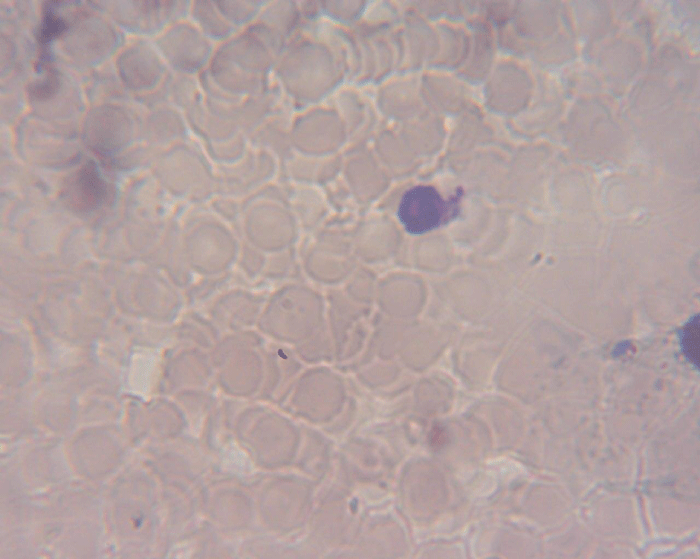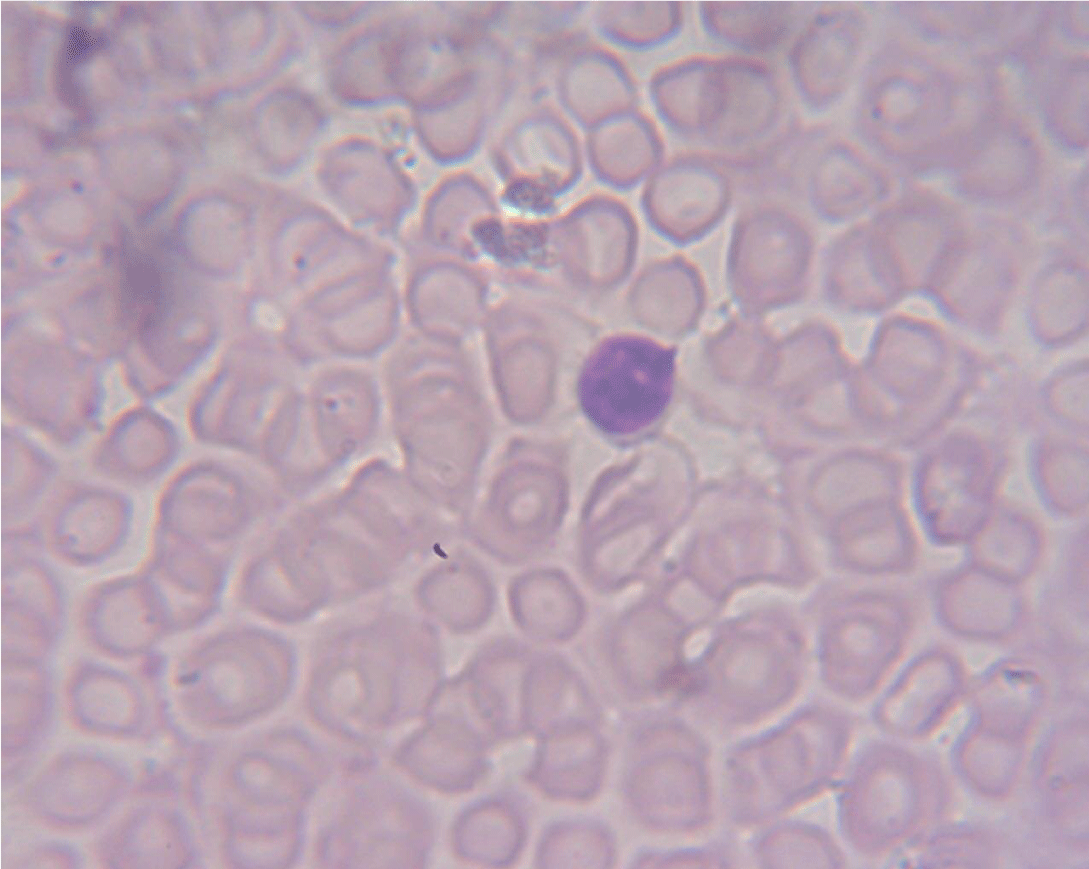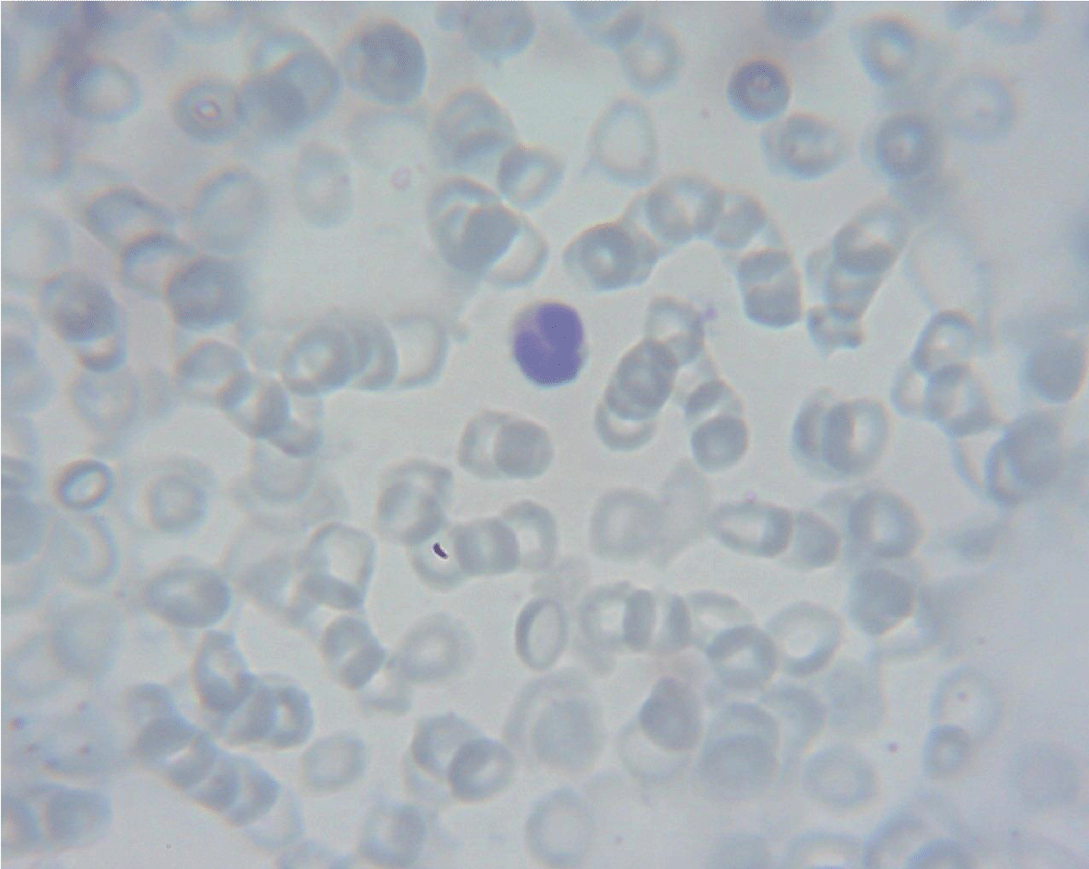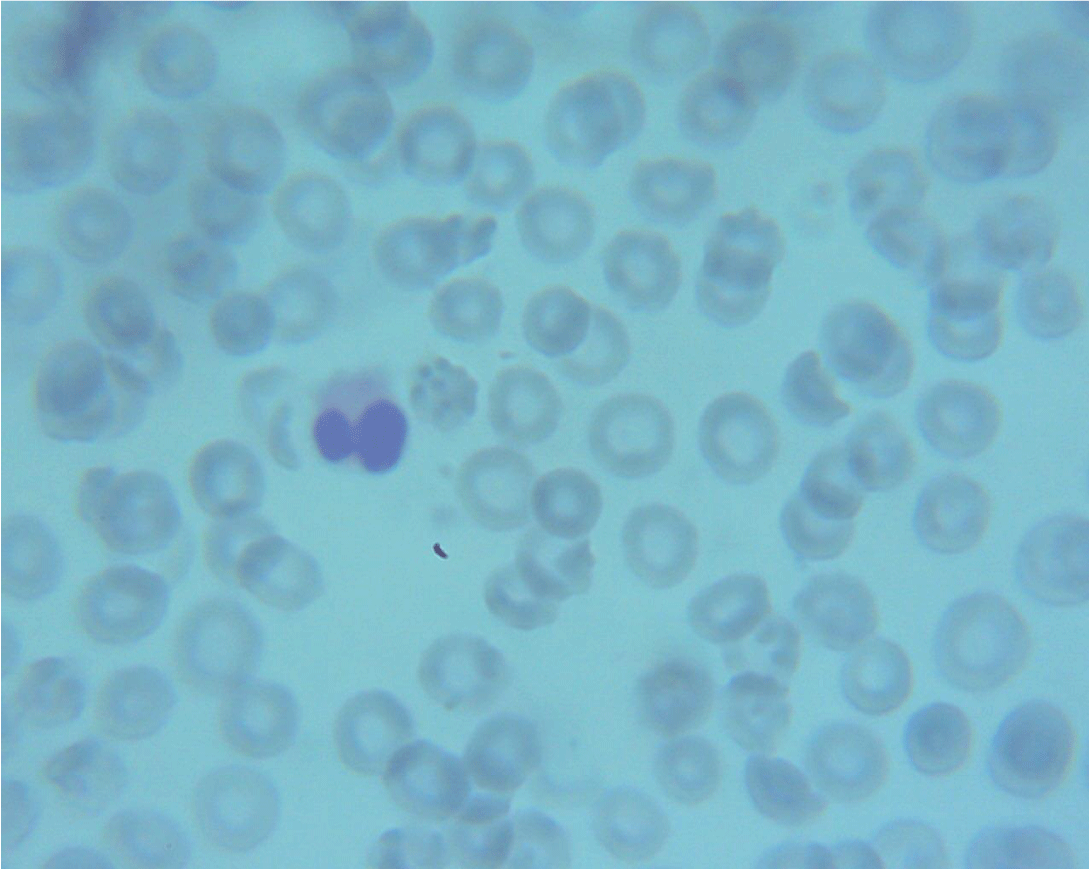The Effects of Chronic Carbon Monoxide Intoxication on Some Haematological Parameters and Films in Rabbits
Agoro ES1*, Wankasi MM3 and Zebedee UL3
1Departement of Chemical Pathology, Federal Medical Centre, Yenagoa, Bayelsa State, Nigeria
2The Department of Medical Laboratory Science, Niger Delta University, Wilberforce Island, Bayelsa State, Nigeria
3The Department of Haematology, Federal Medical Centre, Yenagoa, Bayelsa State, Nigeria
*Address for Correspondence: Eni Yimini Agoro, Departement of Chemical Pathology, Federal Medical Centre, Yenagoa, Bayelsa State, Nigeria, Tel: +080-374-349-95; E-mail: enisagoro@gmail.com
Submitted: 17 December 2018; Approved: 21 January 2019; Published: 23 January 2019
Citation this article: Agoro ES, Wankasi MM, Zebedee UL. The Effects of Chronic Carbon Monoxide Intoxication on Some Haematological Parameters and Films in Rabbits. Adv J Toxicol Curr Res. 2019;3(1): 001-005.
Copyright: © 2019 Agoro ES, et al. This is an open access article distributed under the Creative Commons Attribution License, which permits unrestricted use, distribution, and reproduction in any medium, provided the original work is properly cited
Keywords: Haematological parameters; White Cell differential; Red Cell indices; Carbon monoxide
Download Fulltext PDF
Introduction: Carbon Monoxide (CO) is a colourless, odourless and euphoric gas produced as a result of incomplete combustion of organic materials. It could either cause morbidity or mortality depending on the concentration and duration of exposure.
Aim: The aim of this study was to examine the long term effect of CO inhalation on haematological parameters.
Materials and Methods: Twenty (20) rabbits were utilized for the study as supported by Mead’s resource equation. Carbon monoxide used for the study was sourced from portable generating set (SUMEC). The study was divided into four groups; controls, ten days, twenty days and thirty days’ exposures respectively. All the groups except the control were exposed daily to mild CO concentration for 30 minutes for the durations of the study. Blood sample were extracted using standard procedures. The haematological parameters analysed included full blood count, red cell indices and film reading. The samples were analyzed using SYSMEX Automated Blood Count machine (SYSMEX KX-21N ANALYZER) and microscopy for blood film reading.
Results: Data were analyzed by one-way Anova (Post Hoc-LSD) with statistical significance considered at p-value < 0.05 using Statistical Package for Social Science (SPSS) 18-20 version. The results showed that RBCs, lymphocytes and basophils were significantly raised (P < 0.05). On the contrary, platelets, white blood cell, neutrophils, monocytes, eosinophils, MCV, MCH and MCHC were significantly decreased (P < 0.05).
Conclusion: In conclusion, the findings of the study revealed that chronic CO inhalation has the predisposition of distorting haematological profiles.
Background Studies
Carbon Monoxide (CO) is a poisonous non-irritant gas produced by incomplete combustion of organic materials due to insufficient oxygen supply [1]. It has 200 to 300 times more affinity for haemoglobin(Hb) than oxygen (02), forming carboxyhaemoglobin which is quite stable [1]. The product of the reaction renders haemoglobin incapable of carrying oxygen resulting in tissue hypoxia. As long as CO is in the atmosphere, it goes on accumulating and fixed in blood, leading to acute chemical asphysia [1].
Carbon monoxide poisoning is the inhalation of large quantity of CO which is deleterious to the body. The poisoning could be acute or chronic depending on the quantum of CO inhaled and the duration. Chronic poisoning involves inhalation of mild concentration of CO for a longer duration without an immediate effect. The inhalation of CO could result to morbidity or mortality based on the concentration of CO, the duration of inhalation, the health status or age of the victim. The sources of carbon monoxide, according to the U.S. Environmental Protection Agency (EPA), include: generators and other gasoline powered equipment, automobile exhaust etc. Small amounts of CO are also produced endogenously as a result of metabolic conversion of haem to biliverdin [2].
Haematological parameters entail components and measurements of blood. Blood is a carrier of life; hence any distortion has a holistic impact on the entirety of the body. The components of blood such as red blood cells, white blood cells and platelets aid the body in transportation of nutrients, wastes and gases. Also, the defense capacity and clotting competences are the prerogative of blood and its components. Blood and life are knitted together and any dysfunctionality usually results to morbidity or mortality.
Handful of researches have been conducted with respect to CO impacts on haematological parameters. The meta-analysis findings on the effect of CO poisoning on haematological parameters are divers with contrary and supportive opinions [3-11].
The nutshell of the findings from the above listed authors pointed to the fact that CO is a toxic gas whose production must be curtailed. Nigerians are exposed to varying degrees of CO exposures due to the high demand for CO producing machines and equipment. A deliberate study of the aftermath effect of chronic exposure of CO on arrays of haematological parameters will possibly open up unknown pathophysiology of some idiopathic diseases. It may further aid in the diagnosis of chronic CO poisoning occasioned by the patterns of findings established from this study.
Material and Methods
The choice location was for this study was Bayelsa State. Bayelsa State is located in the south-south region of Nigeria; the center of oil exploration and gas flaring. The animal intoxication and the haematological analysis were conducted at the fringe of Epie Creek in Igbogene Epie and the Haematology Department of the Niger Delta University Teaching Hospital Laboratories, Okolobiri, Yenagoa, Bayelsa State respectively.
Study population
Twenty (20) rabbits were utilized for the research as supported by Mead's resource equation [12]. The rabbits were divided into four groups. The first group constituted the control. The control group was not exposed to CO prior to mechanical sacrifice. The remaining three groups (10th, 20th and 30th) were exposed to CO for 30 minutes daily for ten days, twenty day and thirty days respectively. The carbon monoxide was produced from one stroke generator (SUMEC). The CO concentration was determined using method as applied by Golden et al. [13] and Struttmann et al. [14]. The concentration of CO was maintained at a maximum of 200 ppm. The generator’s exhaust pipe was directed into an enclosed rabbit cage about a meter from the rabbits. Carbon monoxide produced from the generator was conveyed into the cage in a concentration that cannot cause immediate death for a maximum of 30 minutes. Blood was extracted from all the groups for the haematological analysis after the final intoxication.
Ethical approval
The ethical clearance and experimental protocol were approved by the Ethics Committee of the Bayelsa State Ministry of Health. The Animal Welfare Act of 1985 of the United States of America for research and Institutional Animal Care and Use Committee (IACUC) protocol were the basis upon which this study was carried out.
Selection criteria
Rabbits used were apparently healthy and active as confirmed and approved by the research veterinary doctor. Rabbits that showed signs and/or symptoms of illness were excluded from the research. The research utilized only male albino rabbits of same age and weight. The age range was between six to eight months. The weight brackets were 1.5-2kg.
Collection of sample
Blood samples were collected from the heart using method postulated by Ness, [15]. The blood samples collected were averagely four (4) ml and were introduced into EDTA containers for haematological analysis. Haematological investigations carried out included: haemoglobin, haematocrit, red blood cells, white blood cell counts and differentials, platelets and red cell indices (MCHC, MCH, and MCV). Blood film was read with the aid of a microscope.
Sample analysis
Full blood count and red cell indices were estimated in whole blood sample using automated analyzer. The brand of automated analyzer used was SYSMEX Automated Blood Count machine (SYSMEX KX-21N ANALYZER). The film reading was done with the aid of a compound microscope (Olumpus).
Results
Table 1 shows that red blood cells increased significantly (P < 0.05) as the days and durations of chronic CO intoxications increases. Contrarily, White Blood Cells (WBC), Platelets (PLT), Mean Cell Volume (MCV), Mean Cell Haemaglobin (MCH) and Mean Cell Haemaglobin Concentration (MCHC) decreased significantly (P < 0.05) as the days and durations of chronic CO intoxications increases. Table 2 shows that white blood cells, neutrophils, monocytes, eosinophils and basophils decreased significantly (P < 0.05) as the days and durations of chronic CO intoxications increases, whereas lymphocytes increased significantly (P < 0.05). Plate 1 shows a normal film exhibiting blood components within the reference range. Plate 2 shows microcytic cells, roulaux formation, hypochromic RBCs and leucopenia. Plate 3 shows microcytic RBC, hypochromic RBC, roulaux formation and neutrophil band. Plate 4 shows decreased RBC, Anisocytosis, marked hypochromasia, platelet aggregation and lymphocytosis.
Discussion
Carbon monoxide (CO) is very poisonous and rapidly causes damage to cells or tissues basically by hypoxia. This study was carried out to establish the chronic effect of continuous inhalation of low concentration of CO on some vital haematological parameters.
The study showed a significant increase (P < 0.05) in Red Blood Cell (RBC) counts as the duration of CO intoxication increases (Table 1). The increase could be attributable to the strong affinity of Hb for CO. The hypoxic mechanism of CO usually stimulates haemopoietic processes; a compensatory measure to enhance oxygen supply in the body. The increases in RBCs help in the transportation oxygen across the body due to the unavailability or reduced free haemoglobin [1]. The findings of this research are in agreement with that of Wang et al. [2] that also showed raised red blood cells. In same vein, increase in RBC, Hb and PCV occasioned by the hypoxic activity of CO were also observed by Mohammed et al. [11]. A study carried out by Ganesh and Saravanan, et al. [4] using cigarrete smokers as subjects also posited that RBC and PCV increased amongst smokers.
However, the result of the WBC counts showed a glaring decrease in concentration after the initial exposure (first 10th day). Furthermore, the counts increased as the exposures progresses to the 20th and 30th day, though not as the control counts (Table 1). This finding ley credence to the leucopenia observed on the blood film’s plates 2-4. The sudden decrease in WBCs could be attributed to sequestration and/or massive attraction of leucocytes to damaged areas occasioned by the ferocity of CO hypoxic activities. This could have been abated after the causative agent was discovered with the consequent production of more WBCs. This finding is similar to that proffered by Harper and Croft-Baker, et al. [16] on reasons of a decrease in concentration of WBC. This finding contrasted with that of Vanuxem et al. [5] which showed a characteristic haematological change increase in the form of leukocytosis and neutrophilia. The findings by Sung-Soo and II-Saing et al. [17] follow same with the above stated authors. Utilizing cigarrate smokers, Ganash and Saravanan et al. [4] observed leukocytosis occasioned by hypoxia.
Moreover, the findings of the study clearly showed that platelets counts decreased (P < 0.05) upon persistent exposure to CO during the study duration (Table 1). The blood film result supported platelet counts as shown in Plate 4. Decrease in levels of platelets is termed thrombocytopenia. Most cytotoxic drugs or some drugs that utilize similar mechanism of action as CO are known culprits of thrombocytopenia [18]. The results of this research is similar to that of Suphan and Jamsai et al. [7] and Oscar et al [8] which reported a decrease in platelets level upon persistent exposure to chronic CO exposure. The decrease could be attributed to the inhibitory capacity of CO to both the intrinsic and extrinsic pathways of platelets synthesis. However, Oscar et al [8] knotted the decrease in platelets counts to inhibition of calcium as also reported by Agoro, et al. [19]. A study carried out by Agoro et al. [19] showed a decrease in concentration of serum and vitreous calcium upon exposure of rabbits to CO.
Furthermore, red cells indices are most frequently used in the classification of types of anaemia and other haematological abnormalities. The result revealed that MCV, MCH and MCHC levels decreased as concentration of the CO exposures and durations increased (Table 1).The blood film observed under the microscope also points to an anaemic situation (Plate 2-4). Red cells are pivotal to normal red cell indices estimation. Increase in red cells as established in this research have a spillover effects on the red cells indices. Since it is a tool for classification of anaemia; the deranged red cell indices as observed in this study could be a pointer to the preponderances of chronic CO exposure to causing anaemia. Hence, chronic CO intoxication has the propensity of causing anaemia. The result of the research is similar to the findings of Penney and Bishop et al. [10]. The finding disagreed with that of Muhammed et al. [11] that revealed a non-significant difference in MCV and MCHC levels.
Differential white cell count provides information on white cells presence in the circulating blood, i.e. neutrophils, lymphocytes, monocytes, eosinophils, basophils (rarely seen). The findings revealed that neutrophils, monocytes and eosinophils were significantly decreased after exposures to chronic graded CO, whereas lymphocytes exhibited a significant increase upon exposure to chronic graded CO (Table 2). The result of the blood film on the 30th day also showed lymphocytosis (Plate 4). The result was synonymous with the findings on decreased WBCs. Hence the decrease in total WBC was occasioned most especially by neutrophils, monocytes and eosinophils. The scientific basis of the decrease is same with that of WBCs explained above. The increase observed in the lymphocytes counts could be attributed to toxic changes and initial shock of CO intoxication. Toxic changes of which CO is known for is characteristic of leukocytosis [17]. The study carried out by Ganash and Saravanan, [4] also noted leukocytosis amongst cigarettes smokers. The research showed explicitly that the lymphocytosis observed could be due to hypoxic activity of CO poisoning. In the nutshell, chronic Co intoxication could result to immune depression making the body vulnerable to arrays of idiopathic diseases.
The study utilized rabbits as a substitute for humans. This is due to the scientific inappropriateness of humans in such as study. Another limitation noted in this study is the use of a single controls, instead of a matched controls. The paucity of funds was the main reasons of most of the handicaps recorded in this study.
Conclusions
The findings of the study explicitly showed that continuous exposure to mild concentration of CO over a long time has a deleterious effect on the body system. The immune depression shown in this study could be the gate to the ever increasing number of idiopathic diseases in CO infested environments. The findings are a clarion call to the governments of the various nations especially Nigeria where CO pollution is poorly regulated. The need for a tight regulatory framework to reduce CO emission is strongly advocated.
- Nageshkumar, G.R. Cardiac Poisons “In Textbook of Forensic Medicine and Toxicology”. Jaypee Brothers. 2006; 425-432.
- Carl AB, Edward RA. Analytes of Haemoglobin Metabolism-Porphyrin, Iron and Bilirubin, In Fundamentals of Clinical Chemistry. Fifth edition. Saunders. 2001; Pp 603.
- Wang X, Wang, X, Wen T, Guan L, Zhang Y, Zhu M, et al. Hemorheological changes in cerebral circulation of rabbits with acute carbon monoxide poisoning. Clin Hemorheol Microcirc. 2009; 43:271-82. https://goo.gl/vBiJLj
- S AL, Lakshmanan A, P GK, A S. Effect of Intensity of Cigarette Smoking on Haematological and Lipid Parameters. J Clin Diagn Res. 2014; 8: 11-13. https://goo.gl/3idumM
- Vanuxem D, Sampol J, Weiller PJ, M Bark J, Grimand C. Influence of chronic smoking on leukocytes. Respiration. 1984; 46:258-264. https://goo.gl/jJqMxz
- Whang SH, Choi IS. Studies on the clinical and laboratory findings of acute carbon monoxide intoxication. J Korean Med Assoc. 33: 997-1005.
- Suphans S, Viroj W, Jamsai S. Blood carboxyhaemoglobin level and platelets: A correlation study. Clin Appl Thromb Hemost. 2004; 10: 281-283. https://goo.gl/uMHL1Q
- Gende OA. Carbon monoxide inhibits capacitative calcium entry in human platelets. Thromb Res. 2004; 114: 113-119. https://goo.gl/yY7b8C
- Brune B, Ullrich V. Inhibition of platelet aggregation by carbon monoxide is mediated by activation of guanylate cyclase. Mol Pharmacol. 1987; 32: 497-504. https://goo.gl/Qx4nPu
- Penney DG, Bishop PA. Hematologic changes in the rat during and after exposure to carbon monoxide. J Environ Pathol Toxicol. 1978; 2: 407-15. https://goo.gl/wqzDio
- Muhammad IK, Mulazim HB, Muhammad S, Sharmaine, B. Effect of smoking on red blood cells count, hemoglobin concentration and red cell indices. P J M H S. 2004; 8: 361.
- Kirkwood J, Robert H. The UFAW Handbook on the Care and Management of Laboratory and Other Research Animals. Wiley- Blackwell. 2010; pp. 29. https://goo.gl/vktLQB
- Golden M. Carbon monoxide poisoning. J Emerg Nurs. 2008; 34: 538-542. https://goo.gl/jYuvWB
- Struttmann T, Scheerer A, Prince TS, Goldstein LA. Unintentional Carbon Monoxide Poisoning from an unlikely source. J Am Board Fam Pract. 1998; 11: 481-484. https://goo.gl/qwWBT1
- Ness RD. Clinical pathology and sample collection of exotic small animals. Vet Clin North Am Exot Anim Pract. 1999; 2: 591-620. https://goo.gl/ZrRHPk
- Harper A, Croft Baker J. Carbon monoxide: Undetected by both patients and their doctors. Age Ageing. 2004; 33: 105-109. https://goo.gl/yjCJCi
- Lee SS, Choi IS, Song KS. Haematological changes in Acute Carbon monoxide intoxication. Yonsei Med J. 1994; 35: 245-251. https://goo.gl/GhGxHw
- Monica C. District Laboratory Practice in Tropical Countries Part 2. Cambridge Low- price Edition, 2000. https://goo.gl/NZQ5xj
- Agoro ES, Chinyere GC, Akubugwo EI, Wankasi MM, Agi VN. Some vitreous humour cardiorenal biochemical parameters as an indicator of acute carbon monoxide poisoning death: an animal model. Australian Journal of Forensic Sciences. 2018. https://goo.gl/mNzsXN





Sign up for Article Alerts